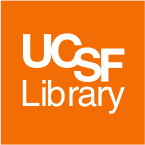When assessing the second factor of fair use, think about the work itself. Courts tend to favor factual works over more highly creative works as a fair use. So an original poem or short story would garner stronger copyright protections from the courts than a factual article on the etiology of diabetes mellitus. Courts are typically more protective of creative works (art, poetry, film) than non-fiction works. In the same way, courts have favored published works over non-published manuscripts, giving recognition to an author’s right to first publication. There may also be other factors to consider, such as if the work is out of print, or if is an “orphan work,” where the author or copyright holder is unknown or can’t be found after a due-diligence search. Most of the time, however, the courts have focused discussion of this factor around the factual vs creative content and the publication status of the material.
Check out these LibGuides for more information on copyright, fair use, and finding and using images:
Questions? Contact Peggy Tahir, Education & Copyright Librarian.


